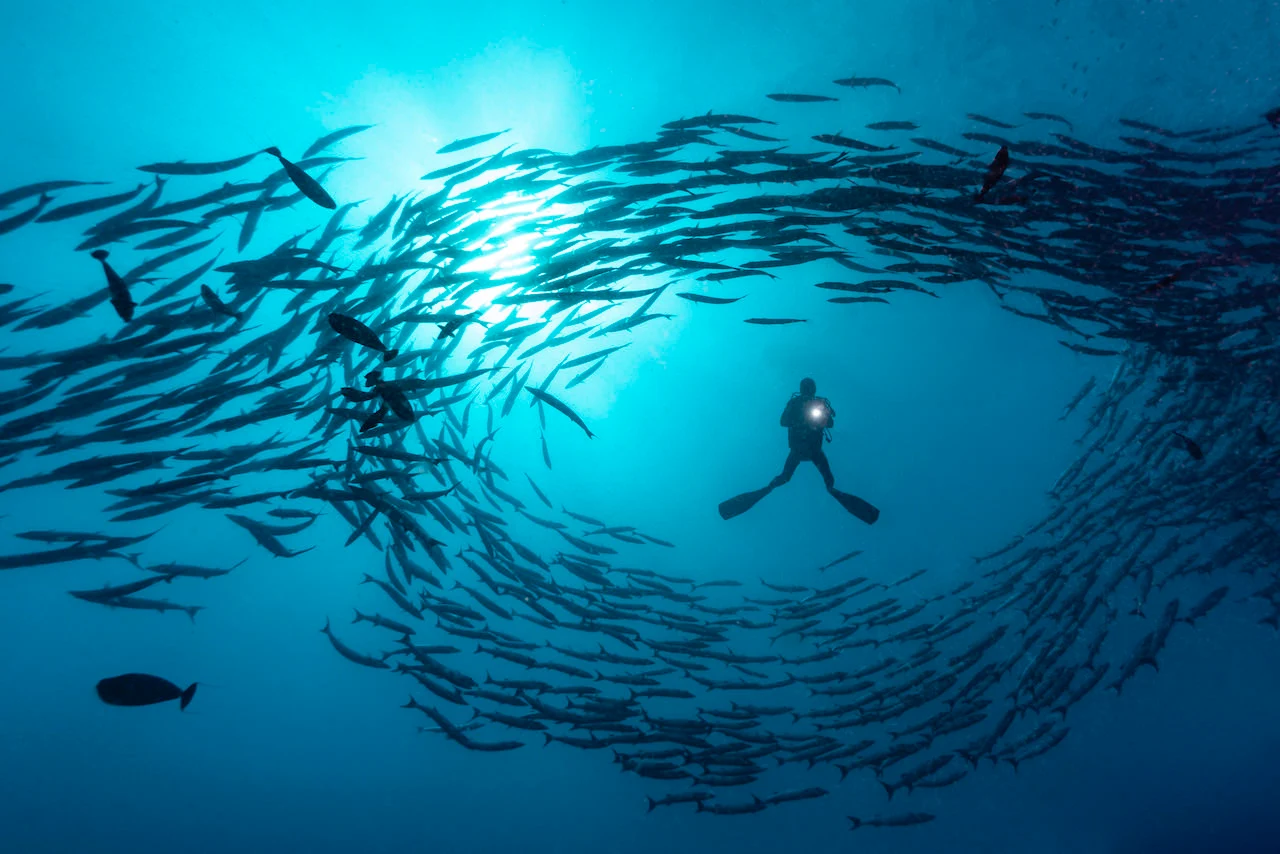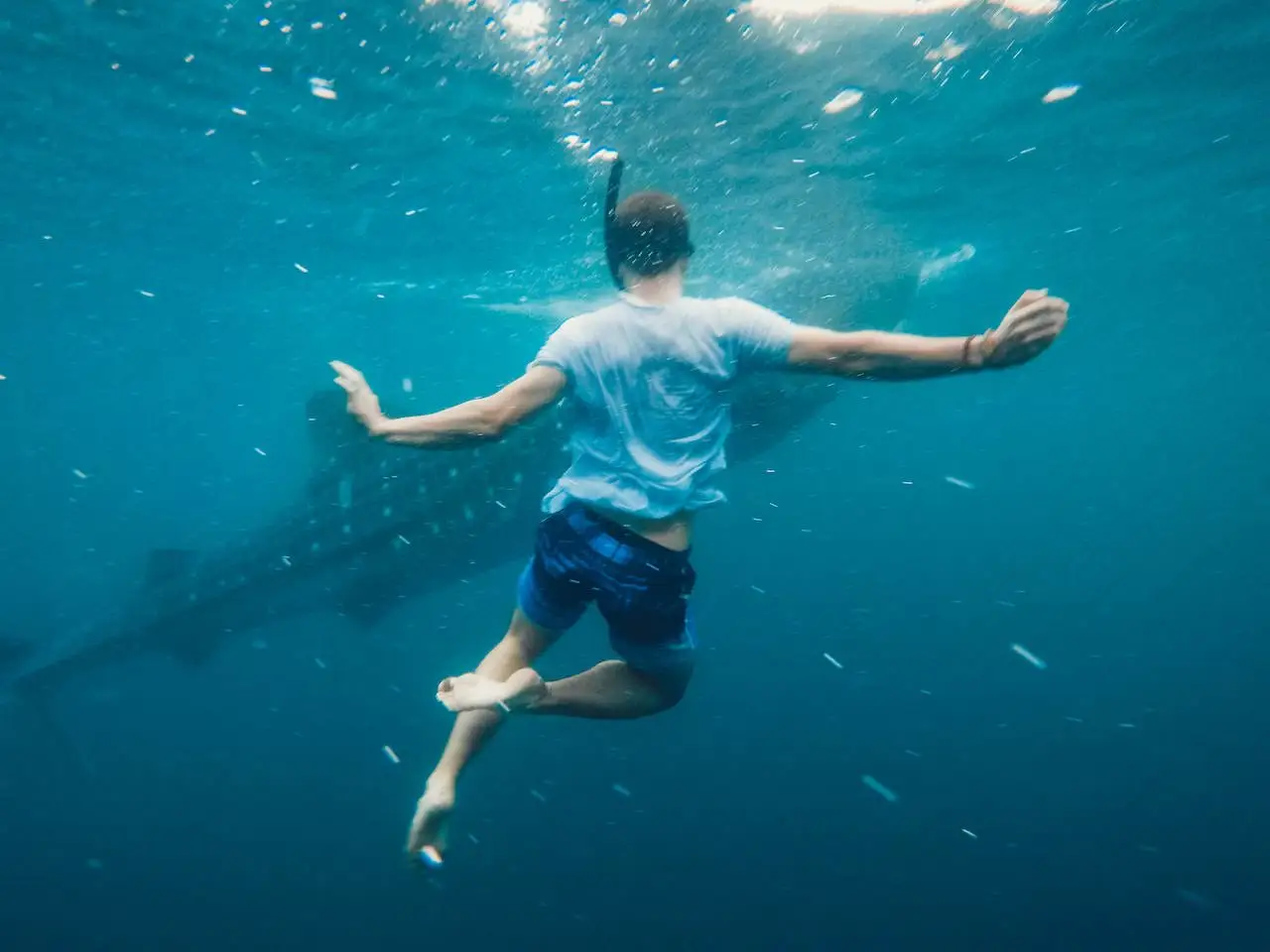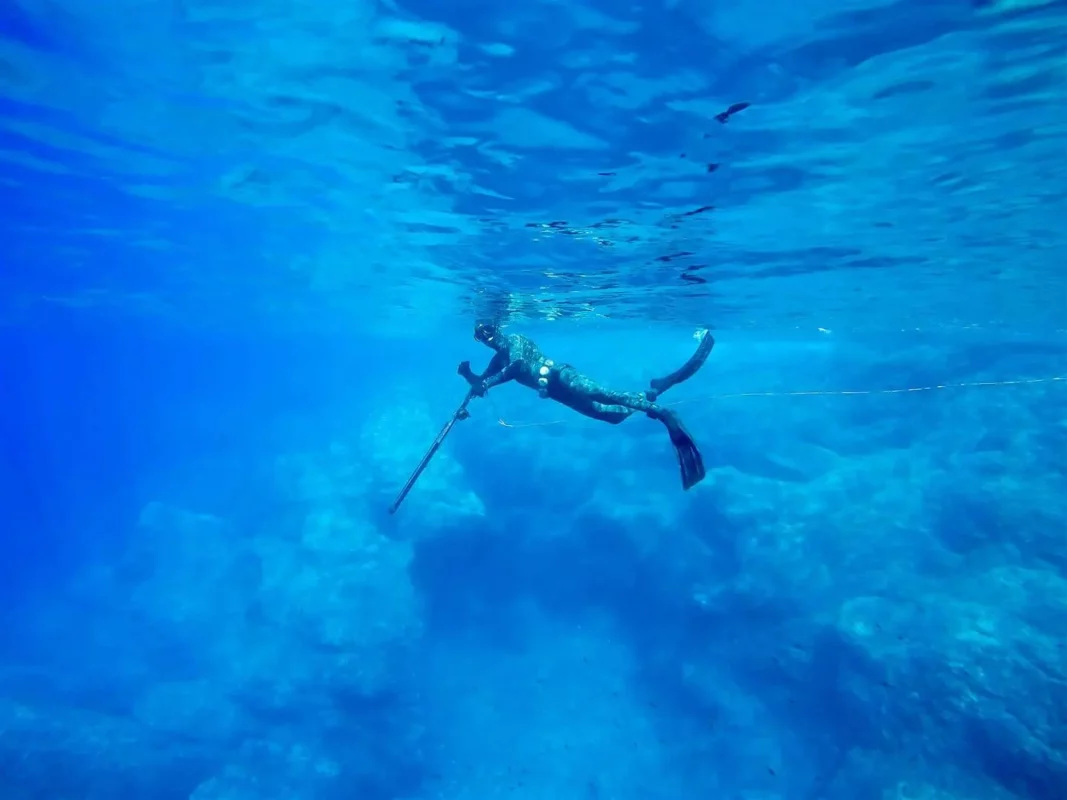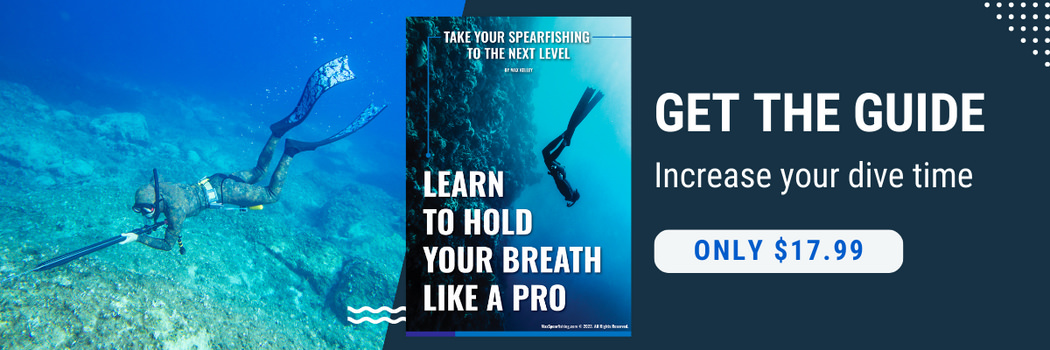No products in the cart.
Spearfishing Advice
Spearfishing Safety Tips to Avoid a Diving Disaster
In this article you’ll learn the spearfishing safety tips that might safe your life in a disaster.
Now I’ve been spearfishing since I was 15 years old, a bronzed little Australian kid running around the beaches with a snorkel and a pole spear. In my time I’ve done some pretty silly things, and as I learnt more and started pushing my limits more and more, I realized just how important safety is when you’re spearfishing in the big, blue ocean.
Before you jump in the water yourself, learn what you need to do in order to start spearfishing safely. Break these rules at your own risk, because you won’t just be putting yourself in danger. You’ll be risking everyone you’re spearfishing with too.
Max Spearfishing is reader-supported. We may earn a small commission for purchases using our links. Click here to learn more.
Spearfishing Safety Tips to Avoid a Diving Disaster
To me, there’s nothing more exciting than exploring the open ocean, with a speargun in hand. You never know what types of marine life you’ll come across, or what you’ll discover. But it’s also risky, as risk and excitement go hand in hand when you’re spearfishing. If you want an incident-free spearfishing trip, you need to be consciously thinking about safety.
Keep reading to learn the safety tips you need to know before you go spearfishing.
Respect the weather and the ocean
If you’re ever looking at the sea and thinking, “Oh wow it looks a little rough today,” it might be a good idea to call off your spearfishing session. Many of these spearfishing safety tips are pure common sense. Before heading out, check the weather forecasts, and know what the tides and currents are doing. You should avoid spearfishing in rough seas.
I lost a friend who braved stormy seas in his fishing boat, despite having spent most of his life on the water. We never saw him again. It’s not safe to go spearfishing in bad conditions. You’re risking too much. When it’s rough, choppy, or the swell is too big, don’t push it. The ocean is unforgiving to the spearo’s who don’t respect it.
It’s also important to be aware of what’s happing in the area you’re spearfishing in. Ask yourself, does the water look safe? Strong currents can drag you away from the boat. Swell smashing into the rocks along the headland aren’t safe either. Always pay attention to what’s going on around you, and don’t risk your safety just to catch a fish.
Spearfishing safety tip #1: Understand the ocean is dangerous, and only go spearfishing in good conditions.

Be aware of your own limits and abilities
Building on the last point, one of the most important spearfishing safety tips is to have a good understanding of your own abilities. Be honest with yourself, and swimming and diving abilities. You need a good level of physical fitness to go spearfishing, and strong swimming skills. Don’t push yourself into situations you’re uncomfortable in.
In addition, you should be familiar with all of the spearfishing gear you’re taking into the water. And have a solid understanding of proper spearfishing techniques. There’s a wealth of information on YouTube that you can go through, or find someone who is more experienced than you to learn the ropes. Things like how to hold your breath underwater or how to safely dispatch and handle a fish are good to learn about, before getting into the water.
Oh, and proper equalization is important too. Descending without proper equalization can do significant damage to your inner ears and cause barotrauma. That’s internal, pressure-related injuries. You need to be equalizing your ears frequently as you descend to relieve the buildup of pressure.
Spearfishing safety tip #2: Be honest about your abilities, and learn all you can before getting in the water.
Never point a loaded speargun at anyone
Now, most people know the golden rule about guns. Never point it at anything you don’t intend to destroy. Well, a speargun requires a somewhat similar level of caution. Because once it’s loaded, it is also a deadly weapon. One of the most important spearfishing safety tips you can follow, is this rule. Never point a loaded speargun at anyone.
The tension from the bands on a loaded speargun is intense, powerful enough to shoot a heavy stainless steel shaft several meters in front of you. If your dive buddy happens to be in the way when your speargun goes off, it will not end well. But here’s the thing. Good spearguns have a safety switch, and will only allow you to press the trigger (and fire the speargun) once the safety switch is deactivated. And for the most part, this works. But my advice is not to rely on the safety switch alone.
Your safety switch on a speargun is essentially just a metal (or sometimes plastic) stopper, that doesn’t allow the trigger to move. However they have been known to fail. Jarrod Ditmars is just one tragic example. Surfacing after a dive, he bumped into his friend. Even though his speargun’s safety was on, the gun went off. Sending the spear into Jarrod’s head. After a few days on life support, doctors were unable to remove the spear and the 21-year old passed away.
Spearfishing safety tip #3: Your safety switch doesn’t keep you safe. Never point a loaded speargun at anyone.
Stay safe and use your dive float
Sharks aren’t the most dangerous thing in the ocean. You want to know what is? Other boats.
Floating on the surface in your camouflage wetsuit, a black speargun and a pair of dark fins makes you almost impossible to see. Especially if that boats motoring into the sun, the skipper’s only looking at their GPS, or they’re distracted by any number of other things. Worse still if you’ve been underwater and only just surfacing as they power past. If you get run down by a boat at speed and you’ll break bones. And then there’s the propellors to worry about, that will cut you to shreds as they pass over you.
Or you can use a spearfishing float and flag. They’re relatively inexpensive for how visible they make you in the water. And with a bright orange float with a diver below flag sticking up, following spearfishing safety tips like this will give you a much higher chance of being seen by any approaching boats. It’s a key piece of spearfishing safety gear.
But you get three added benefits when you’re spearfishing with a float. Generally my speargun is attached to my float with a floatline, which means I can drop my speargun and easily retrieve it later. Like when you stumble across a lobster hole and need two hands to pull those suckers out. It’s a nice bit of safety gear you can hang onto at the surface if you ever need a break. And if you ever lose your buddy, it’s much easier to spot where they are if they’re also using a dive float and flag.
Spearfishing safety tip #4: Stay safe and use a dive flag and float whenever you’re spearfishing in the water.
Use a dive buddy to stay safe while spearfishing
Ok, now this is a rule that many of us have broken at some point or another. Because it can be hard to coordinate your spearfishing trips with another person, especially if you’re trying to get a quick late afternoon dive in before the sun sets, or you’re travelling in a new location. But there’s a reason you need a buddy. Spearfishing without one is incredibly unsafe, and you’re risking everything by not following one of the most basic spearfishing safety tips.
So many things can go wrong when you’re in the water, and your buddy is your backup. The one who is keeping an eye on you while you’re underwater. Scanning the water around for any sharks. And making sure that you’ve not pushed your breath hold limits too far and end up blacking out underwater. My advice is to find someone who shares your love of spearfishing. In most areas you’ll find spearfishing groups, and they’re generally pretty friendly to newcomers who respect the sport.
Before a dive, make sure you’re aligned on your plans for each spearfishing session. Consider what you’ll do if someone gets lost, some of your equipment fails, or there’s a medical emergency. That way, you can trust in what’s going to happen next, if (or when) something inevitably goes wrong.
Spearfishing safety tip #5: Find a dive buddy who can stay come spearfishing with you, so you can watch each other’s back.
Know how to revive your dive buddy
When you’re diving as a team, one of the most important steps to learn is how to deal with shallow water blackouts. Sometimes you’ll hear this referred to as a samba. In short, it’s when you fall unconscious underwater, and have a complete loss of your motor functions. Without assistance, you will not make it back to the surface.
Now, this is one of the most critical spearfishing safety tips because it’s your job as a buddy to act immediately. If you see your spearfishing partner stop moving underwater, or start to twitch and jerk around, you need to act immediately. Dive down and bring them back to the surface as fast as possible. Support their head, and get your dive float under them so they’ll stay put on the surface. If they don’t start responding to slight taps on their face, you’ll need to do rescue breaths.
Tilt their head at a slight incline, to open their airways. Then, position your mouth over their nose while holding their mouth shut. This creates a strong seal, and give two rescue breaths. Doing this should trigger a response, but if not repeat until you’re at an area where you can perform CPR.
Considering just how important it is to know how to revive your dive buddy after a blackout, my advice is to take a freediving course. They’ll teach you exactly what to do, and you’ll also learn a number of freediving techniques that’ll improve your spearfishing game.
Spearfishing safety tip #6: Take a freediving course and learn how to care for someone experiencing a shallow water blackout.
Never keep your fish on your body
As one of the most common sense spearfishing safety tips, it’s a mistake I see many new to the sport make. Even experienced divers I’ve spearfished with have broken what I consider one of the cardinal rules of spearfishing. Never keep your fish on your belt, or near your hands. Now I love sharks, and they’re probably one of my favorite fish to see in the ocean. But clipping the dead fish you’ve speared onto your belt or the handle of your speargun just isn’t safe.
You do not want to be in the way when a shark comes in to grab the fish. They have teeth, they will bite. And if your catch is floating around by your thigh or your torso, it’s a good way to lose a chunk of meat to a hungry shark. Who was really only after the fish anyway. You getting bit isn’t what the shark was intending either.
Always clip your fish to your stringer, that’s hanging on your float line. That way you’ve got at least 30 to 50 feet between your catch and any hungry sharks. Alternatively, you can drop them back in your boat, or up on your spearfishing kayak if you’re in particularly shark infested waters. It’s common sense, but you’d be surprised just how many people bbreak simple spearfishing safety tips like this one.
Spearfishing safety tip #7: Never clip your freshly caught fish to your body or the handle of your speargun.

Invest in the right spearfishing equipment
When it comes to spearfishing, there is quite a bit of gear that you’ll need to buy. Once of the smartest spearfishing safety tips, is to buy the spearfishing gear suitable to the conditions you’ll be spearfishing in. From cheaper products that are designed for beginners, to the most advanced spearfishing equipment you can buy once you start diving in open water and pushing your limits.
Because a beginner’s speargun probably isn’t what you want in deep water chasing big fish. You’ll need more power in your shots, which requires multiple, thicker and even shortened bands. This puts an incredible amount of pressure on two things. The barrel of your speargun which can warp under the tension. And the trigger mechanism, which is only locked from firing with a simple safety switch. Overloading a cheap speargun greatly increases the chance it’ll misfire.
Oh, and make sure to properly care for your equipment. Rinsing and drying it after each spearfishing session, and replacing any damaged or worn-out equipment as soon as possible.
Spearfishing safety tip #8: Buy the spearfishing gear for the conditions you’ll be diving, and take care of it.
Don’t forget to bring your safety equipment
In addition to what you need to go spearfishing, for the last of the spearfishing safety tips remember to bring your safety gear.
Having a float and tow line is a good first step, but what if something were to go wrong on the water? What if you were unable to make it back to shore? Think about the gear you’d need to stay safe for an extended period on the water, and make sure you’re bringing it with you. Things that I always take in the water with me:
- Underwater flashlight: One with a strobe effect for signaling at night
- Marine emergency whistle: Has a sharp, shrill blast to attract attention
- Titanium dive knife: For quickly dispatching your catch to avoid sharks
- Personal locator beacon: That I can activate for a rescue (just in case)
No products found.
Wrapping up the best spearfishing safety tips
There’s no question spearfishing is an adventure sport. You’ve swum into open ocean, and are now in the playground of some of the biggest predators in the world. You’re hunting in an environment where you can’t even breath, so make sure you’re taking your safety into account too. There are risks to spearfishing, but if you listen to these spearfishing safety tips, you’ll have a much better chance to make it home, and enjoy the big cook-up of fish with your family.
For me, that’s what’s most important.
Happy spearin’


